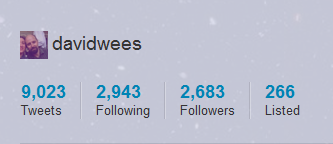Article directed at our school’s parent population, reposted with permission from my school’s monthly magazine, The Imprint

Twitter is what is known as a micro-blogging site and social media tool. The idea is that each person that signs up has the ability to post short messages of no more than 140 characters to the service, either through a web browser, a special program, or directly by sending text messages to the service. Some people have used the service to publish inane updates about their breakfasts and other uninteresting things, but increasingly it is being used by professionals who want to connect with other people in their field.
Twitter has become a real-time human-driven search engine. The results that are posted are primarily the result of real people deciding what information is relevant and what information is irrelevant. Unlike Google, the information posted is not ranked by popularity, but instead it is all carefully chronologically arranged. As well, many mobile phones today can receive updates from Twitter directly, turning it into a mobile search tool.
If you want to know more about the Twitter service and how it works, check out this video by Common Craft called “Twitter in Plain English”: http://www.commoncraft.com/twitter
I’ve been using Twitter for a little over two years now and it has transformed the way I gather information and resources. I use it as a filter on the Internet that helps deliver the most relevant and most useful resources to my fingertips. I’ve learned that I can make Twitter useful by being selective about what I share.

Currently, I have 3392 people I am “following” on Twitter and 3102 people who are “following” me. This is my personal network on Twitter. How the system works is that I only view updates from the people that I am following, and updates I post get sent to the people that are following me. I follow educators from around the world, and most of the people who are following me are, themselves, educators.
When I post updates to Twitter, I talk about useful things I’ve found. I don’t talk about what’s going on in my life, I talk about issues that are relevant to my career. As a result, people consider me a reliable source of information on educational technology, assessment, mathematics education, and other areas in which I have expertise.
Think of the people I’m following as my personal team of research assistants, who filter through the Internet and post relevant information for me to find. On the other hand, when I post a question, I generally get multiple responses. Think of the people that are following me as an army of educators, who collectively can answer any question I pose to them.
I also use Twitter as a direct communication tool with other Twitter educators. There are a large number of Twitter users that I connect with on a regular basis, and every week we have a discussion about issues in education using the #edchat hashtag. You can check out what #edchat is by checking out this website: http://edchat.pbworks.com/

Teachers all over the world have started using Twitter as a major source of information about their profession. I very rarely have to do my own Google searches anymore, I rely on the fact that the educators in my personal network are willing to share. This tool can be incredibly powerful and can transform your own search habits, provided it is leveraged effectively.